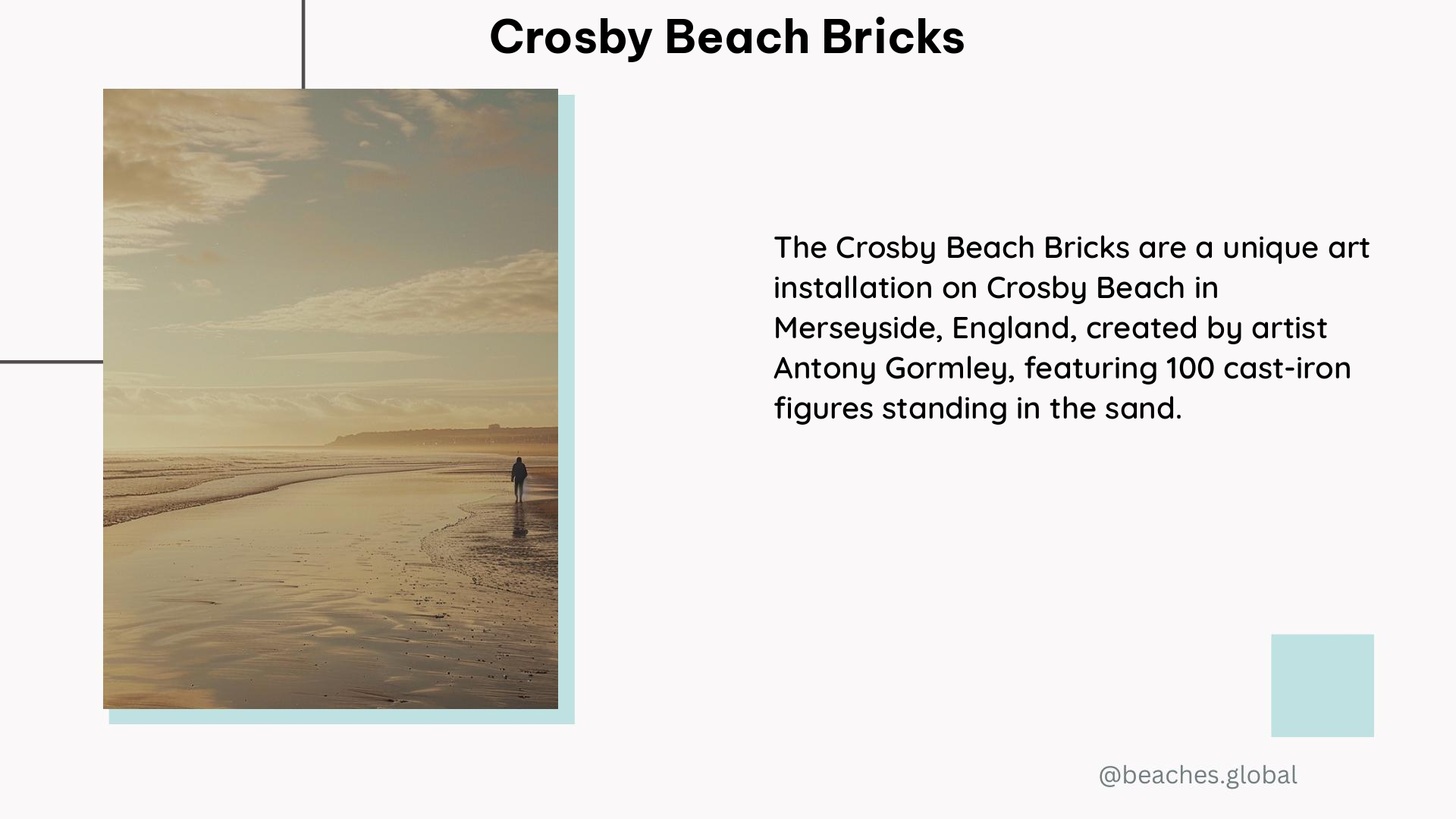Crosby Beach, located just a few miles north of Liverpool, is a unique destination for history enthusiasts, particularly those interested in the impact of World War II on the city. After the war, the rubble from the destroyed buildings was transported to Crosby Beach as a barrier against coastal erosion. This “brick beach” now serves as a stark reminder of the lives uprooted and overturned by the conflict, with thousands of pieces of debris from bombed buildings and houses scattered along the 2km-long coastline.
The Origin of Crosby Beach Bricks
Emma Marsh, an archaeology student at the University of Durham, has been working to identify the origin of these debris pieces. She has enlisted the help of online communities and used photogrammetry to document the objects in 3-D, cross-referencing the information with aerial footage archives, search engine street views, and her own photographs. Marsh’s research has uncovered the history behind many of the buildings behind the bricks, stones, and tiles at Crosby Beach.
Accessing Crosby Beach Bricks

Visitors to Crosby Beach can access the site via the Hall Road train station on the Southport-bound branch of Merseyrail’s Northern Line, with trains running approximately every 15 minutes. Parking is available alongside the HM coastguard building and at Crosby leisure center and Crosby marine lake for those visiting by car. It is advisable to wear sneakers for the uneven terrain and to follow museum rules by looking but not touching, as some of the structures built in the early 20th century contained asbestos as a building material.
Unique Features of Crosby Beach Bricks
The Crosby Beach Bricks offer a unique opportunity to explore the history of Liverpool during World War II. The site provides a tangible connection to the lives and buildings affected by the conflict, with thousands of pieces of debris scattered along the coastline. Visitors can explore the site and learn about the history behind the bricks, stones, and tiles through the research conducted by Emma Marsh and other historians.
Photogrammetry and Historical Research
Emma Marsh’s research has been instrumental in uncovering the history behind the Crosby Beach Bricks. By using photogrammetry to document the objects in 3-D and cross-referencing the information with aerial footage archives, search engine street views, and her own photographs, Marsh has been able to identify the origin of many of the debris pieces. This research has provided valuable insights into the impact of World War II on the city of Liverpool and the lives of its residents.
Asbestos Hazard
It is important for visitors to be aware of the potential asbestos hazard at Crosby Beach. Some of the structures built in the early 20th century contained asbestos as a building material, and it is advisable to follow museum rules by looking but not touching the debris. Wearing sneakers and avoiding direct contact with the bricks and stones can help mitigate the risk of exposure.
Coastal Erosion and Preservation
The Crosby Beach Bricks were originally used as a barrier against coastal erosion, and the site continues to serve this purpose today. However, the ongoing erosion of the coastline poses a threat to the preservation of the debris. Efforts to protect and preserve the site are ongoing, and visitors can play a role in this by respecting the site and following the rules.
Conclusion
Crosby Beach offers a unique opportunity to explore the history of Liverpool during World War II through its “brick beach.” The site is easily accessible and provides a tangible connection to the lives and buildings affected by the conflict. Whether you’re a history enthusiast or simply looking for a unique coastal experience, Crosby Beach Bricks is a must-visit destination.
References:
– BBC News, “Crosby ‘brick beach’ Blitz secrets revealed by student”
– Amusing Planet, “The War Rubble of Crosby Beach”
– Atlas Obscura, “Crosby Blitz Beach”
– The Conversation, “Liverpool’s Crosby Beach Is a Mile of World War II Blitz Rubble”
– One Legged Robin, “The Crosby Rubble”
